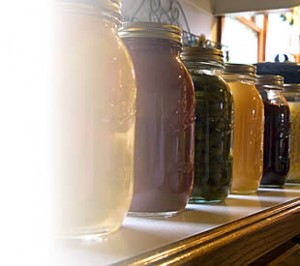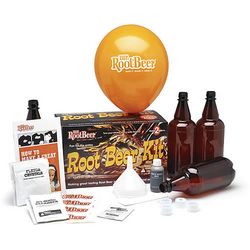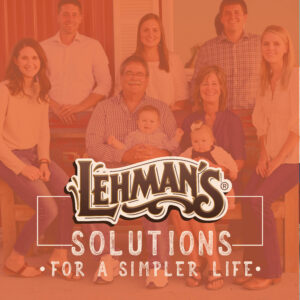
On a brilliant early autumn day, I took a long drive through the hills of Massachusetts and into New York to get to Cold Antler Farm, Jenna Wogonrich’s tiny homestead.
She was presenting a workshop on soap making, a skill I really wanted to master. I was bartering a candle making workshop in the morning for the soap class. Might I just mention that if you plan to present a workshop you would be well-advised not to do one on candle making where participants spend a lot of time watching wax solidify (boring) when someone else is working with potentially exploding lye (exciting)?
If You Take Care–You Can Make Soap!
Here’s what I learned. Soap is pretty much lye mixed with a fat. The tricky part (you knew there was a tricky part, didn’t you?) is that lye is not easy to work with. It is a hazardous substance that is fatal if swallowed and can cause serious burns if not handled properly. So the first and most important part of soap making is learning how to deal with lye.
Working with lye should not be attempted with children and pets under foot so plan ahead to have uninterrupted time and a clear space to work.
- Lye is a base, so keep a jug of vinegar nearby to douse a burn should you splash. Water needs to be available too.
- Mix lye either outside or in a spot with excellent ventilation as the fumes are hazardous.
- You need some simple safety equipment. Goggles, heavy rubber gloves, long-sleeved shirts and long pants are necessary.
- Read and post all first aid measures so you will know what to do if you have a spill.
Have I scared you yet? Well I was pretty freaked until I watched the process and realized that lots of things are dangerous if mishandled. If the directions are followed you’ll be fine.

I almost never buy kits. I find that it’s generally much cheaper to buy the components of a kit individually but in the case of soap making, I’m going to depart from that practice for a couple of good reasons. A soap making kit will contain some of the safety equipment. It will have a good set of instructions and soap making is not something to attempt without them. It will also have everything you need to get started so you won’t find yourself needing to run out to the store to get something you forgot.
The things not included in a kit are the spoons and containers, rubber gloves and a scale. You probably have all of these in your kitchen. A digital scale is best. Soap directions always go by weight rather than volume. An inexpensive immersion blender will make the mixing process quicker but it’s not a necessity. You will want to make a trip to the thrift shop for a large pot and some bowls as you really don’t want to use your regular kitchen tools for this. Make sure all equipment is glass or stainless steel. I like to keep dedicated bins for all of my tools for a given project. That way, when I want to start a project, be it soap making, candle making or canning, everything is at my fingertips.

There will be lots of add-ons once you master the basic process. Scents and colorings, molds and specialty oils are all available and can lift your soap making from the realm of practical skill into gift-giving, farmers market and craft fairs.
The General Idea
I’m going to give you the basic process so you can have some idea about how easy it really is.
Prepare your soap molds. I used some small, glass bread pans I got from a tag sale for a quarter. Of course, you can buy some pretty molds.
Gather all your supplies.

Weigh out your hard oils and put them in your soaping container. Weigh out liquid oils if you are using any and set them aside.
Prepare your lye solution. Remember to always pour the lye into the water. Do not pour the water into the lye. Stir gently with spoon until the lye dissolves.
When the lye is clear you can pour it over the hard fats or oil in the soap pot. This will be very hot.
Stir this mixture with a wooden spoon or a whisk until the fat melts. Be patient. It takes a while. Add the liquid oil to the melted fat and lye.
Now comes the boring part. You need to stir, either by hand or with an immersion blender until a trace is left behind when you run a spoon through the soap. It will look like a small ribbon and remain when you remove the spoon. This takes a while.
Now add scent or color, blend and pour into your molds. Molded soap will need to be aged for several weeks. If you pour the soap into a large flat mold (like an old glass or stainless steel baking pan or sheet), the soap will then need to be cut and also aged for several weeks and then be ready to use.
Obviously, these are the most basic instructions for room temperature soap making but it does give you an idea of how it works. I would still suggest a good soap book or DVD and working with an experienced soap-maker for a few times until you are comfortable with the process. With some time and attention, you can turn out a year’s worth of soap in just a few hours. How cool is that?































